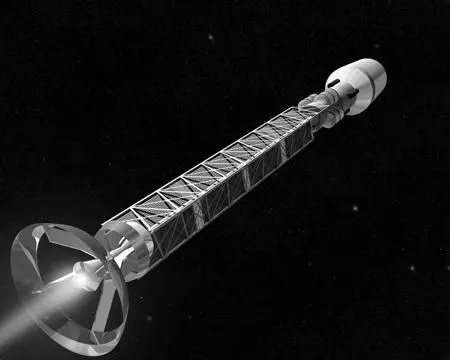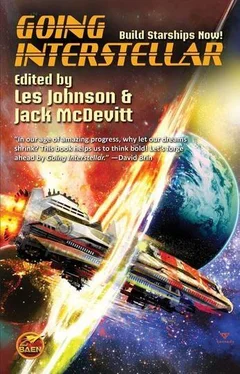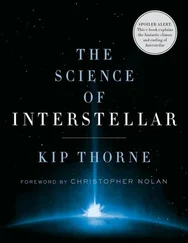Even then, our hypothetical Mercury-based antimatter factory can produce only about five hundred kilograms of anti-hydrogen atoms. If the factory works continuously for a century, about fifty thousand kilograms of antimatter will be produced. This may be hardly enough for Eugen Sanger’s photon rocket, which requires equal amounts of matter and antimatter. But, as we shall see in the section on antimatter rockets below, an operational spacecraft propelled by antimatter/matter-annihilation may function quite well if antimatter is a very small fraction of the total fuel mass.
It should also be mentioned that it is not necessary that our antimatter factory or factories be located on a planet’s surface. Another location would be free space. Here, a huge parabolic, micron-thin reflector might be used to concentrate and focus solar energy on a bank of efficient, hyper-thin and low mass solar photovoltaic cells. Robert Kennedy, Ken Roy and David Fields have suggested that humans may ultimately construct approximately one thousand-kilometer solar-sail sunshades in space to slightly reduce the amount of sunlight striking the Earth and thereby alleviate global warming. Such in-space devices could also be used to concentrate solar energy on Mars. There is no inherent reason why these sunshades or solar concentrators could not serve a dual function and direct sunlight towards in-space antimatter factories.
Also, as Forward speculates, the antiproton conversion efficiency he quotes for the Tevatron may not be the ultimate. There is plenty of room for improvement if some of humanity’s brightest minds turn their attention to the problems of antimatter production and storage.
How Do We Store Antimatter??—VERY, VERY CAREFULLY!!!
No matter where the antimatter is produced, the next challenge is the safe storage of the stuff until we are ready to use it in a starship engine. This is especially difficult since antimatter is the most volatile material in the universe and will disappear in a puff of radiation if brought into contact with normal matter.
As it turns out, there are a number of options. But none of these is especially easy. This section describes some candidate antimatter storage systems.
One possibility is magnetic storage rings. Using combinations of electric and magnetic fields, antiprotons would be spun continuously around one ring at constant velocity, positrons (if necessary) around another. When reaction with normal matter in the starship’s combustion chamber is required, an appropriate mass of antiparticles could be magnetically diverted towards the target without touching chamber walls. Antiparticles have been stored in such a manner after deceleration in existing antimatter factories. But we wonder what the limits are on antiparticle density in the ring. And is it possible to reliably alter field strength in parts of the storage ring as the ship changes its acceleration rate?
Many of the potential solutions to antimatter storage have been reviewed in a paper by the American physicists Steven Howe and Gerald Smith. They describe a version of the Penning trap they constructed at Pennsylvania State University. This device might be able to store one hundred billion antiprotons per cubic centimeter. That sounds like a lot of antiprotons, but a Penning trap at least a kilometer across would be required to store a kilogram of antiprotons!
Forward, in his Air Force report, expresses the opinion that antimatter engineers will store frozen anti-hydrogen rather than antiprotons or an antiproton-positron plasma. A ball of anti-hydrogen with an electric charge could be levitated using electric fields. Care must be taken, though, to adjust the field to compensate for the starship’s acceleration. And some mechanism must be developed to cleanly remove anti-hydrogen atoms from the ice ball and transfer them to the reaction chamber without prematurely and disastrously annihilating them.
The levitated ice ball concept might be workable in the frigid wastes of interstellar space. But frozen anti-hydrogen might be very hard to store in the much hotter environment of a near-Sun antimatter factory.
We are a long way away from being able to produce and store the amounts of antimatter needed for an interstellar voyage.
Antimatter Rockets
Antimatter technology is in its infancy. But as it matures, its application to space flight is a natural outcome. Figure 1 presents major features of an antimatter rocket. The payload rides ahead of the fuel tanks. The fuel consists of normal matter (probably hydrogen) and antimatter. Antimatter is fed into an “annihilation chamber” where it reacts with normal matter. An electromagnetic nozzle is used to expel the charged particles as exhaust.

Figure 1. Artist concept of an antimatter rocket. (Image courtesy of NASA.)
Let’s say we desire an interstellar cruise velocity of 0.09c after all the fuel is expelled, which allows a ship to reach Alpha Centauri in about fifty years (not counting the time required for acceleration and deceleration).
If our starship has a mass of about one million kilograms, then it would require twelve thousand eight hundred kilograms of antimatter. The hypothetical Mercury-based antimatter factory discussed in a previous section could produce this mass of antiprotons in about twenty-five years.
Instead of a crewed starship, let’s say we wish to launch a robotic probe with an unfueled mass of one thousand kilograms. In this case, only 12.8 kilograms of antimatter will be required! And if further miniaturization is possible, the antimatter mass required for an interstellar probe can be reduced still further.
We next consider the acceleration process. If the ship requires about 10 years to accelerate an average of about 10 7kilograms of matter will be converted into energy each second. The probe generates matter/antimatter annihilation energy at an approximate average rate of 10 10watts, roughly equivalent to that of a large city. The ship’s generated power level will be about one thousand times greater, approximating that of our entire global civilization! Antimatter propulsion is clearly not for the faint hearted!
* * *
Further Reading
Early antimatter history has been discussed in many archival sources. One such is H. A. Boorse and L. Motz, ed., The World of the Atom , Basic Books, NY (1966).
The story of the antiproton is eloquently told by L. Yarris in “The Golden Anniversary of the Antiproton,” Science @ Berkeley Lab (Oct. 27, 2005), http://newscenter.lbl.gov/feature-stories/2005/10/27/ the-golden-anniversary-of-the-antiproton/
For further information regarding possible biomedical antiproton applications, check out L. Gray and T. E. Kalogeropoulos, “Possible Biomedical Applications of Antiproton Beams: Focused Radiation Transfer,” Radiation Research , 97, 246-252 (1984).
Many sources have speculated on possible military applications of antiprotons. Two web references on this topic, both by Andre Gsponer and John-Pierre Hurni, “Antimatter Underestimated,” arXiv:physics/0507139v1 [physics.soc-ph] 19 Jul 2005 and “Antimatter Weapons,” http://cul.unige.ch.isi/sscr/phys/antim-BPP.html
Many astronomy texts consider the early moments of the universe when matter (and antimatter) formed. One readable text, authored by Eric Chaisson and Steve McMillan, is Astronomy Today , 3 rded., Prentice-Hall, Upper Saddle River, NJ (1999).
Sanger’s photon rocket is described by Eugene Mallove and Gregory Matloff in The Starflight Handbook , Wiley, NY (1989). This book also discusses the decay scheme for the proton-antiproton annihilation reaction.
Читать дальше













